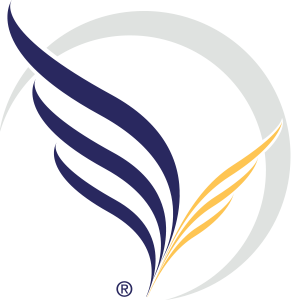US beach volleyball player Phil Dalhausser an Olympic Gold medal hopeful for the London Games developed a blood clot in June. The clot formed in the veins that drain the blood from his left arm. This spontaneous clotting of the veins of the upper extremity is known as effort thrombosis or Paget-Schroetter syndrome in honor of physicians who described this condition in the 1800’s. Others refer to it as Axillosubclavian Vein Thrombosis or ASVT. In addition to this effort thrombosis another category of thrombosis has been described in patients with indwelling IV catheters in these veins for medications.
Ormond Beach’s Phil Dalhausser who teamed with Todd Rogers to win the men’s doubles in beach volleyball Gold in the 2008 Olympic Games is not a household name. However, his team is one of the best in the world. Their goal of a second Olympic Gold medal in the London Games was dealt a setback by Phil’s thrombosis.
Beach volleyball is huge in Southern California and has a growing world-wide fan base. The popularity of women’s beach volleyball has eclipsed men’s. In the 2012 Games you no doubt watched Olympic champs Misty May-Treanor and Kerri Walsh win their third consecutive Gold Medal. No wonder women’s volleyball is so popular these days.
The Dalhausser and Roger’s men’s team is not so well known outside volleyball circles despite the fact that they are the defending Gold Medal champions from the 2008 Olympics. At 6-foot-9 with a shaved head, Dalhausser doesn’t exactly blend into a crowd. However, he states that, ‘People recognize me every once in a while.’ That is just fine with Phil and Todd.
Dalhausser and Rogers were seeded second in London, just as they were in Beijing four years ago. They compiled a 40 match win streak last year and won nine of 12 tournament titles in 2010 to win the tour championship. But their lead up to the Games was marred by illness and injury. Dalhausser sprained his ankle and Rogers tore the meniscus in his left knee and underwent arthroscopic surgery.
Recently their medical problems continued when Dalhausser was diagnosed with blood clots in the subclavian vein that drains his left arm after finishing third in a tournament in Prague in late May. His left arm became swollen and he was hospitalized for three days, and he and Rogers missed the next two tourneys in Moscow and Rome.
In the three tournaments since their return to the court they searched for their rhythm. Though they played well they did not regain their pre-injury form. They were eliminated by the Italians unable to return to the Gold Medal match. Rogers, 38, played in his final Olympics and plans to retire, leaving Dalhausser, 32, to choose a new partner before the 2016 Games in Rio.
It is interesting that a world class athlete would develop a blood clot in his subclavian vein. Fortunately this condition is relatively rare. You may be more familiar with athletes like Serena Williams developing blood clots in her legs (DVT or VTE) after an injury or transcontinental plane flight but this is different.
The subclavian vein collects the blood from the neck and upper extremities and directs it back towards the heart. Unlike the leg veins which work against gravity the veins from the upper half of the body generally flow with gravity. Therefore, we don’t see the same set of problems in them when compared to the leg veins.
In the upper chest there is a potential narrowing as the subclavian vein passes between the clavicle, the chest wall muscles and the first rib. In some people this narrowing is made worse by effort. With exercise or use of the arm like when a volleyball player strikes an overhead shot, a carpenter hammers a nail, a construction worker runs a jack hammer or a professional pitcher throws a fastball scar tissue can develop around the subclavian vein. Over time this can lead to thrombosis or clotting of the vein.
When the subclavian vein clots there is sudden and pronounced swelling of the affected arm. Dalhausser’s wife noticed that his L arm was almost twice as big as his right and took him to the hospital in Prague. He was diagnosed with two blood clots one in his left shoulder and one in his left arm. Fortunately the clots were caught early and they were dissolved preventing permanent arm swelling. He was discharged on blood thinner shots for at least one month to prevent other clots from forming.
In some patients the onset can be more gradual and the bodies existing veins grow larger to take over some of the outflow from the arm. In these cases large collateral veins or varicose veins may be seen over the upper chest. They may prevent the characteristic acute arm swelling that Phil noted. However, with exercise swelling may be more pronounced only to resolve with rest and elevation. This presentation may be more common in the catheter related ASVT.
Once the acute clot is cleared additional procedures may be necessary to correct the restriction on the subclavian vein that caused the clot to form. The most common procedure for this is removal of the first rib to allow more space for the vein. It is unclear if Dalhausser will need this procedure.
We wish Dalhausser the best and look forward to watching him play in the 2016 Games in Rio with a new partner. Hopefully, his run up to the 2016 Games will not be marred by injury or recurrent subclavian vein thrombosis.
So What Can We Learn From Dalhausser’s Vein Problem?
If you or a loved one has sudden swelling of your arm you should seek immediate medical attention. It could be a serious problem. Also, remember if you have swelling of the arm after exercise or notice enlarging veins on your upper chest that this could be a sign of a chronic thrombosis or clotting of the subclavian vein. In either case this is nothing to ignore and your should see your doctor.
At Vein Specialists of the South we are committed to ‘Healthy Legs for Life’. This is seen in our dedication to education on vein disease, prevention, treatment and maintenance of healthy legs. I trust that you found this information useful. If you have questions I would love to hear from you. Contact us online or call (800) 764-3280.









